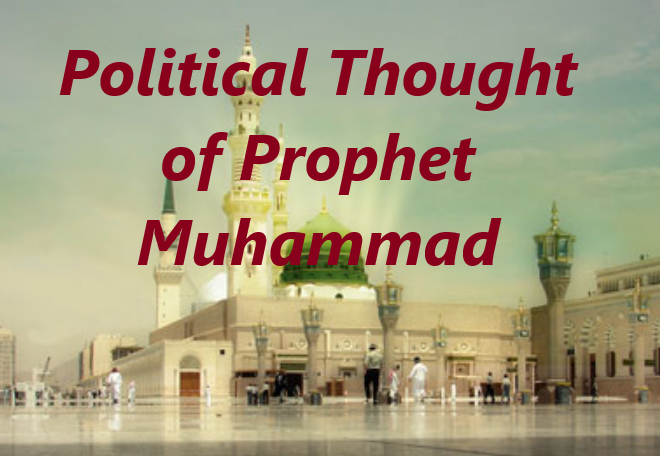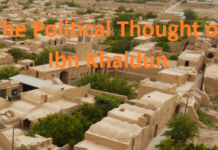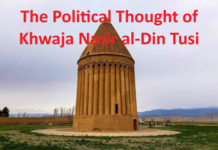Prophet Muhammad, the messenger of Islam, not only presented the theoretical principles of Islam intertwined with politics but also made politics an inseparable part of his life and way of living. What we today recognize as political thought in Islam primarily revolves around this theme. On the one hand, the principles and decrees of Islam, and on the other hand, the way of life of the Prophet, particularly after the migration and the establishment of the Islamic government in Medina, have laid the foundations of political thought in Islam.
This article seeks to explore the relationship between the political thought presented by Prophet Muhammad and the tribal mentality and lifestyle of the Arabs before Islam. It will show that, on one hand, many of the political principles of Islam were based on the same tribal ways. Still, on the other hand, fundamental transformations were introduced by Prophet Muhammad into the political life of the Arabs. As a result, the Arabs, who had lived a tribal life, were able to confront and defeat the two great empires of their time, Persia and Rome, by embracing a new understanding and transformation into a collective called the “Ummah.”
To explain the relationship between the political thought of Prophet Muhammad and tribal thinking, we will first use concepts to display the logic and mode of thought behind tribal life and its consequences. After that, by reviewing the Islamic principles presented by Prophet Muhammad and his actions during his rule in Medina, the similarities and transformations can be observed.
Foundations of Tribal Life Logic and Thought
A tribe, as the fundamental political unit in Arab society, was made up of a group of people whose unity and solidarity were based on a common ancestor and blood ties. This tribal solidarity, known as “asabiyyah,” linked individuals to each other. As Ibn Khaldun[1] explained, “asabiyyah” is a form of emotional attachment and a sense of solidarity grounded in paternal kinship, which forms the foundation of collective responsibility and the link between the members of a tribe, and it is equivalent to “national consciousness” in the modern sense.

The first common and essential feature of this social structure was the position of “lineage” as the main pillar and foundation of solidarity and the bond among its members. The blood and lineage ties were the primary criteria for membership in a tribe and the associated rights, including participation and political activity. The tribe’s members were divided into two categories based on their lineage: core members and affiliates. The core members, based on their social status, included the leader (sheikh), the aristocracy (shurafa) and the descendants (sayyids), and the general tribespeople. The affiliates of the tribe were divided into two categories: those who were connected to the tribe through a pact, and slaves.
The second crucial element in tribal life was the role of “contracts,” which played a dual role in the political life of the tribe. On one hand, it preserved the position of lineage as the central factor, while on the other, it extended the tribe’s power and authority. This indicates the importance of contracts as the second key element in tribal political logic. Pre-Islamic Arab treaties were not limited to matters of lineage; political relations between the tribe leader and the individuals were also formalized through a contract known as “bay’ah” (pledge of allegiance). According to this contract, the tribal leader was committed to upholding tradition, defending the tribe’s customs, and protecting its members, while the individuals, in turn, had an obligation to obey him. These contracts also played a major role in intertribal relations.
The third key element in tribal life was “booty.” Booty, in this context, refers to the specific mode of livelihood and the economic system governing the tribe. Although the Arab tribes subsisted through agriculture, livestock farming, and trade, their economic system was primarily based on taxation (Kharaj) and rent-seeking. This type of economy was not rooted in productive relations like slavery, feudalism, or employer-employee models, but rather, it was based on the relationship between the dominant and the dominated. “Kharaj” refers to the amount that the dominant side imposed on “the dominated”, who was then forced to pay it. “The logical foundations of tribal life had significant consequences for tribal thought and life. The most important consequences are as follows:
- Otherness and the Distinction Between “Us” and “Them”: In the tribe, identity was determined by descent from a common ancestor and blood ties, while territorial belonging played no role in tribal membership. This distinction created an “us vs. them” mentality based on kinship and ancestry.
- The Position of the Individual in the Tribe: Asabiyyah (tribal solidarity) had a dual function for tribal members. On the one hand, it increased the autonomy and individuality of each member, while on the other, it expanded their sense of responsibility. Asabiyyah freed individuals from humility towards anything other than the customs and traditions of their tribe, leading to a sense of freedom or liberty that often culminated in self-centeredness. One of the most notable traits of pre-Islamic Arab society was the pride and refusal to accept anything that could tarnish their status or honor. The nomadic desert lifestyle amplified this trait, leading to excessive emphasis on individual freedom. Asabiyyah defined the individual’s identity through their membership in the tribe and submission to its customs and traditions, placing the tribe above the individual. This reduced the extremism of individualism and placed the person under the command of the tribe.
- Government and State in Arab Perception: In the Arab understanding, the concept of governance was based on kinship and blood ties, remaining confined to the limited framework of familial relations. Kinship was the sole bond uniting the tribe and organizing its members, while religion and law were grounded in the customs and norms of the tribe. Leaders were chosen from among the tribe, and their commands were executed as long as they aligned with tribal customs. This worldview resulted in resistance to behaviors that required a perspective beyond the tribe. It seems that the difficulties in establishing modern nation-states in contemporary Arab societies have roots in this same perspective.
- The Shepherding View of Power: Another consequence of pre-Islamic Arab political thought was the shepherd-sheep metaphor for governance, a prevalent Arab image for leadership. This view, which is also found in Hebrew scriptures and analyzed by Foucault, likens the relationship between the ruler and the people to that of a shepherd and his flock. The term “ra’i,” used for both rulers and shepherds in Arabic, supports this claim. The power of the tribal leader was exercised directly over the individuals, and the leader, much like a shepherd, was responsible for guiding, gathering, and leading the tribe. He was also seen as their guarantor of salvation.
- Tribalism’s Centrifugal Nature: As mentioned, tribalism had a centrifugal tendency, which made the concept of a centralized government unthinkable for Arab tribes. Consequently, the Arabian Peninsula, before Islam, lacked a centralized political system.
- Pledge of Allegiance and Consultation: Two fundamental concepts in the political life of the tribe were the “bay’ah” (pledge of allegiance) and “shura” (consultation), which determined the relationship between the ruler and the tribe. The tribal leader, who was either appointed or chosen based on personal merit and heredity, legitimized his authority through the pledge of allegiance. Bay’ah was, in essence, a reciprocal contract between the leader and the people, where the leader would protect the traditions and support the tribe’s members, while the people would obey him. Moreover, the leader would seek counsel from the tribe’s elite and consult with them on decisions. However, the council’s circle was limited to the Aristocrats (shurafa) and prominent figures, and the general population had no say. The council’s advice was advisory, and the final decision was made by the leader.
The Mission of Prophet Muhammad
Prophet Muhammad began his mission in this context. His efforts, although rooted in many respects in the same mindset, brought profound transformations. Islamic political rationality was shaped in the Qur’anic text and interacted with pre-Islamic political traditions and rationality. The development of these teachings occurred in two distinct phases: the first phase, the Meccan period, was the era of inviting people to new beliefs. During this period, the doctrinal foundations of Islam, aligning with the logic of tribal thinking, aimed at forming a community of believers from the dispersed tribes and slaves.
The second phase was the Medinan period, which was marked by the establishment of urbanization and governance. The Medinan verses, which were revealed after the formation of the community of believers, focused on defining their identity as a unified “Ummah,” distinguishing them from others and establishing the governance of the believers. During this period, a transformation and a sort of transcendence in the political life of the Arabs can be observed, moving from a tribal system to the establishment of a centralized state.
Mecca[2]; The first attempt of Prophet Muhammad: Explanation of Doctrinal Foundations
In this phase, the general agenda of the Prophet’s invitation was as follows:
- Emphasis on the prophethood of Muhammad and the fact that the Qur’an was revealed to him by God through the angel Gabriel.
- Emphasis on the oneness of God, the denial of any partners to Him, and the attack on idols, considering their worshipers as ignorant.
- Emphasis on the existence of life after death, where rewards or punishments for earthly deeds are manifested.
- Encouragement to give charity to the poor, and needy, and for the sake of God.
- Reminding people of the fate of past nations who rejected their prophets.
- Drawing attention to the universe as a unified whole and a collection of parts as evidence of the existence of a unique, unparalleled Creator.
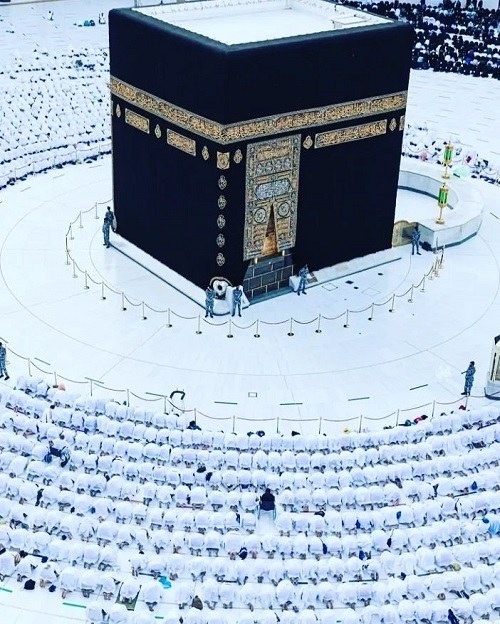
A major political consequence of the disruption of traditions, the instability in the bond of kinship, and the disconnection of children from their fathers was the influence of the new religious ideology on the youth, who were the main audience of the Prophet’s call. This ideology gradually replaced kinship as the main criterion for distinguishing individuals and groups in society. This ideology utilized a mechanism of fear and glad tidings. Through the repeated mention of the consequences of disobeying divine commands, individuals’ relations gradually shifted from tribal attachments to religious and doctrinal ties. The emphasis on the oneness of God and the prophethood of Muhammad created a single “shepherd” and “flock” relationship for all individuals, regardless of their tribal affiliations. The belief being spread did not limit this unity to humanity alone; it also framed the entire universe around God’s oneness.
A sharp sense of “otherness” arose from these doctrinal statements. The distinction between Muslims and non-Muslims can be aligned with tribal customs. On the other hand, belief in the one God directly impacted individual pride and tribal arrogance, similar to how, in tribal relations, the traditions and customs of ancestors held sway over individualistic defiance. Therefore, individuals could easily understand that they should only be obedient to and submissive to the divine commands.
All these doctrinal statements led individuals, on the one hand, to fear the consequences after death, and on the other, to recognize the similarities between the new beliefs and tribal logic, causing them to lean towards the new religion and embrace faith.
Medina[3]; The second attempt of Prophet Muhammad: Strengthening the Foundations of a Post-Tribal System
The migration (Hijra) of the Prophet to Yathrib, which later became known as Medina and was chosen as the starting point of the Islamic calendar, marked the beginning of a new chapter in the establishment of political thought, community, and the Islamic state. The naming of Yathrib as Medina al-Nabi (the City of the Prophet) indicates that the establishment and expansion of Islam from then on was not only concerned with doctrinal foundations but also with the creation of a new civilization. This civilization, shaped by the identity of the Muslim community under the banner of “Ummah,” was consolidated and continued with the formation of a state led by the Prophet.
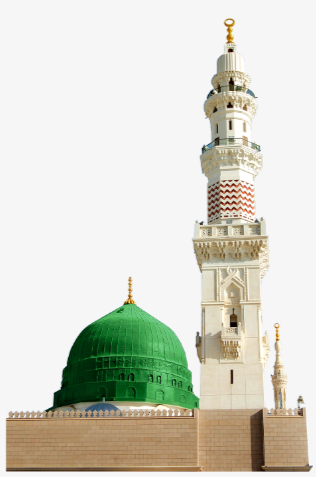
This phase of the Prophet’s activities, which was focused on social unification and the establishment of a post-tribal political system, was indeed rooted in the individuals’ understanding of tribal logic but also represented a profound transformation in the political and social history of the Arabs.
The first critical issue after the Hijra was the provision of sustenance for the migrants (Muhajirun) who had left their possessions in Mecca and had no source of livelihood in Medina. In his first sermon after arriving in Medina, the Prophet emphasized the importance of securing the sustenance of the migrants through charity and ensured it by establishing a bond of brotherhood between the Muhajirun and the Ansar (the Helpers). This brotherhood agreement was a pre-Islamic practice among the Arab tribes, whereby individuals inherited from each other. Prophet Muhammad utilized this tradition to establish the concept of “religious brotherhood,” replacing tribal relationships. In this way, the foundation for a new identity, that of the “Ummah” (community), was laid, which replaced tribal identity.
The concept of “Ummah” emerged in response to the second issue: the coexistence of individuals in the new city. Although the word “Ummah” in the Qur’an has been used to refer to individuals or groups, such as a group of birds, its essence refers to an assembly based on a single goal, a unified faith, and a shared path. Unlike tribal society, the relationships within the Ummah were not based on kinship or bloodlines but on shared purpose and direction, following the leadership of the Imam.
The formation of the identity of the Muslim community as the “Ummah” did not mean the abolition of the tribe but rather elevated the new political identity in comparison to smaller social groups such as the tribe. The Ummah became the spiritual and moral body of the believers, where faith replaced kinship as the defining factor of belonging.
The second key measure taken in Medina was the establishment of faith as the basis for relationships and as the criterion for membership in the new city and the enjoyment of the rights and privileges of citizenship. This important political outcome, achieved through the Medina Charter (Constitution of Medina), resulted in the establishment of a new political identity, breaking away from tribal boundaries and transitioning into a post-tribal system.
It is evident that Prophet Muhammad, leveraging the Arabs’ understanding of the tribal system, was able to form a new type of religious-political community, the “Ummah,” which for the first time made it possible to establish a centralized state for the Arabs. The shift away from blood-based affiliations and the construction of a larger post-tribal society represents the greatest transformation in the political thought of Prophet Muhammad. This achievement laid the foundation for subsequent Muslim leaders to defeat the two great empires of the time, namely Rome and Persia.
This article is adapted from the following book:
(2020). Seyyed Ali Mirmousavi. The foundation of Islamic Political Thought. Ney Publication. Tehran. Iran[In Persian]
1- Ibn Khaldun was a famous Arab historian and sociologist who was born in Tunisia in 732 AH/1332 AD.
2- The first period of Prophet Muhammad’s activity in Mecca lasted 13 years.
3- The second period of Prophet Muhammad’s activity in Medina lasted 10 years.

